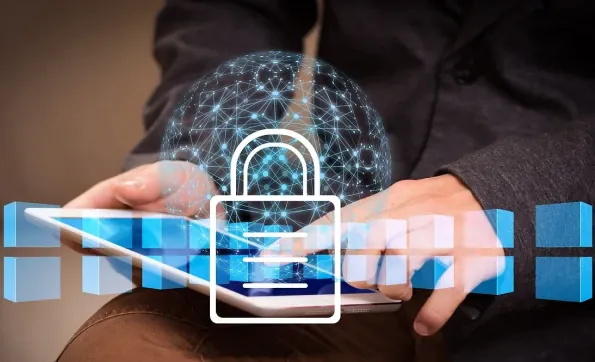As we look towards the future of cybersecurity, particularly from 2025 onwards, the landscape is expected to become increasingly complex and challenging. Leading experts in the field forecast an intensification and sophistication of cyber threats, necessitating robust strategies for organizations to stay resilient. This article delves into the anticipated advancements in cyber threats and the essential measures organizations must adopt to safeguard their operations.
The Evolving Tactics of Cybercriminals
Rise of Cybercrime-as-a-Service (CaaS)
Cybercriminals are evolving their tactics, moving beyond classic methods to embrace more specialized and sophisticated attacks. Derek Manky from FortiGuard Labs highlights that many cybercriminals now spend more time on the reconnaissance and weaponization phases of the cyber kill chain, allowing them to execute precise and swift attacks. This trend includes the rise of Cybercrime-as-a-Service (CaaS) groups that offer a comprehensive suite of attack tools, enabling even non-expert hackers to launch significant assaults. The increasing specialization within these groups, with some focusing exclusively on specific segments like phishing or payload delivery, is a critical development. This specialization allows for more efficient and targeted attacks, posing a significant threat to organizations worldwide.
As cybercriminals enhance their capabilities, it becomes essential for organizations to understand these evolving tactics and adapt their defenses accordingly. The rise of CaaS is particularly concerning because it lowers the barrier to entry for less skilled hackers, increasing the volume and diversity of cyberattacks. This democratization of cybercrime necessitates that organizations adopt advanced security measures and train their staff to recognize and mitigate various attack vectors. The growing sophistication of these attacks highlights the importance of proactive threat intelligence and continuous monitoring to stay ahead of potential threats.
Integration of Physical and Cyber Threats
Manky also predicts that playbooks combining digital with real-life threats will become more common. Cybercriminals have started to physically intimidate executives and employees, and this convergence of threats is expected to grow. Moreover, there’s an anticipated increase in collaboration between cybercrime groups and traditional transnational crime organizations, such as those involved in drug trafficking and smuggling. This integration of physical and cyber threats requires organizations to adopt comprehensive security measures that address both digital and physical vulnerabilities. The convergence of these threats underscores the need for a holistic approach to cybersecurity.
The expanding attack surface due to this integration means that organizations must broaden their security scope to include physical security measures alongside digital defenses. Threats such as targeted physical intimidation, espionage, and sabotage are increasingly coordinated with digital attacks to maximize their impact. To counter these multifaceted threats, companies should implement comprehensive security protocols that encompass both cyber and physical domains. Training employees to recognize and respond to physical threats, establishing secure communication channels, and collaborating with law enforcement can significantly enhance an organization’s resilience against these combined attacks.
Cloud Vulnerabilities and AI-Powered Attacks
Expanding Attack Surface in Cloud Environments
As organizations become more dependent on multiple cloud providers, the attack surface expands, creating more opportunities for exploitation by malicious actors. Cloud environments are highlighted as significant targets for future cyberattacks. The increasing reliance on cloud services necessitates robust security measures to protect sensitive data and applications. Automation and AI-powered tools are becoming prevalent in the dark web marketplace, enhancing the ability of cybercriminals to carry out sophisticated attacks with greater efficiency and impact. Organizations must stay ahead of these threats by implementing advanced security protocols and continuously monitoring their cloud environments.
The dynamic nature of cloud computing, with its elastic and scalable resources, introduces unique security challenges. Organizations must deploy comprehensive security solutions that can handle diverse cloud environments, including public, private, and hybrid models. Effective cloud security strategies should encompass data encryption, access controls, and robust identity management practices. Continuous monitoring and threat detection mechanisms are crucial for identifying and mitigating potential vulnerabilities. Collaboration with cloud service providers to establish shared security responsibilities and leveraging cutting-edge technologies like AI and machine learning can help organizations bolster their defenses against evolving threats.
Leveraging AI for Cybersecurity
Ravi Bindra from SoftwareOne emphasizes the importance of leveraging AI technologies to bolster cybersecurity practices. As threat actors also exploit AI to enhance their attacks, organizations must adopt AI to fortify their defenses. AI’s ability to detect, predict, and neutralize threats in real-time makes it an essential tool in the CISO strategy. However, the rapidly evolving technology landscape necessitates updated data governance frameworks and security protocols, particularly as employees increasingly use AI in their workflows. Organizations must ensure that their AI-driven security measures are robust and adaptable to emerging threats.
Integrating AI into cybersecurity efforts involves adopting advanced tools and techniques that can analyze vast amounts of data to identify anomalies and potential threats. AI-powered systems can provide real-time threat intelligence, automating responses to mitigate risks swiftly. Additionally, AI can enhance threat hunting capabilities by identifying patterns and predicting future attacks based on historical data. Despite the benefits of AI, organizations must address the challenges associated with AI adoption, such as data privacy concerns and the need for continuous algorithm training. By fostering a culture of innovation and collaboration, companies can ensure their AI-driven security measures remain effective against sophisticated cyber threats.
Preparing for Quantum Computing Threats
The Implications of Quantum Computing
CISOs must prepare for future challenges, such as those posed by Quantum Computing. The expected rise of Quantum Computing will render current cryptographic methods obsolete, as quantum-capable threats become more feasible. Bindra highlights the practice of “store it now, crack it later,” where threat actors collect encrypted data to decrypt once quantum technology becomes viable. Even though Quantum Computing may seem like a distant concern, it requires immediate attention to future-proof data security. Organizations must begin exploring quantum-resistant cryptographic methods and updating their security protocols to mitigate the risks associated with Quantum Computing.
Understanding the implications of Quantum Computing is crucial for developing effective defense strategies. Quantum-resistant algorithms, also known as post-quantum cryptography, are designed to withstand attacks from quantum computers. Organizations should closely monitor advancements in quantum research and collaborate with industry experts and standardization bodies to stay informed about emerging quantum-resistant solutions. Additionally, conducting comprehensive risk assessments and inventorying critical systems and data can help prioritize the implementation of quantum-resistant measures where they are most needed. By proactively addressing the potential threats of Quantum Computing, organizations can ensure the long-term security of their sensitive information.
Future-Proofing Data Security
To prepare for the advent of Quantum Computing, organizations must invest in research and development of quantum-resistant encryption techniques. This proactive approach will ensure that sensitive data remains secure even as quantum technology advances. Additionally, organizations should collaborate with industry experts and participate in global initiatives aimed at addressing the challenges posed by Quantum Computing. Ensuring that data security is future-proof not only involves adopting quantum-resistant cryptography but also requires updating existing security infrastructures and protocols to integrate with new technologies and threat landscapes.
Organizations should also consider developing a robust transition plan for migrating to quantum-safe encryption methods over time. This plan should include assessing current cryptographic assets, identifying vulnerabilities, and prioritizing critical systems and data for migration. Additionally, organizations can benefit from participating in industry working groups and consortiums focused on Quantum Computing and cybersecurity. Engaging with the broader cybersecurity community can facilitate knowledge sharing and provide insights into best practices for implementing and managing quantum-resistant cryptographic solutions. Ultimately, investing in future-proofing data security will ensure that organizations are well-equipped to handle the transformative impacts of Quantum Computing.
Protecting Critical Infrastructure and Core Systems
The Significance of Active Directory (AD)
Lincoln Goldsmith from Semperis points out that Active Directory (AD) will become a significant target for cybercriminals. As a central element in enterprise IT networks, AD’s role in managing access to users, applications, and resources makes it a lucrative target. Despite its importance, many organizations fail to maintain dedicated AD-specific backups, leaving them vulnerable to attacks. The increasing number of attacks on critical infrastructure, which relies heavily on legacy software, compounds this risk. These systems often run continuously, increasing the likelihood that organizations, especially those providing essential services, will pay ransoms to restore operations quickly.
Active Directory’s critical function in enterprise security makes it a prime target for attackers. To mitigate risks, organizations must prioritize the protection and resilience of their AD environments. Implementing measures such as multi-factor authentication, patch management, and regular security audits can significantly enhance AD security. Additionally, organizations should establish dedicated AD backup and recovery procedures to ensure swift restoration in the event of an attack. These steps, combined with a thorough understanding of AD’s role within the broader IT infrastructure, can help organizations minimize the impact of potential breaches and maintain continuity of operations.
Enhancing Security Measures for Critical Systems
As we look ahead to the future of cybersecurity, particularly from 2025 and beyond, the landscape is anticipated to become more complex and challenging. Experts in the field predict a dramatic increase in both the frequency and sophistication of cyber threats. This escalation necessitates organizations to implement robust and adaptive strategies to remain resilient in the face of these evolving dangers. The forecasted advancements in cyber threats are expected to include more advanced malware, sophisticated phishing attacks, and increased use of artificial intelligence and machine learning by cybercriminals. The rising interconnectedness of devices through the Internet of Things (IoT) will also provide more avenues for potential attacks, making cybersecurity a paramount concern for businesses, governments, and individuals alike.
To counter these threats, organizations must adopt a multi-layered defense strategy. This includes investing in advanced security technologies, such as next-generation firewalls, intrusion detection systems, and comprehensive encryption protocols. Regular employee training and awareness programs will be crucial to combat social engineering attacks, such as phishing and spear-phishing attempts.
Additionally, organizations should develop incident response plans to swiftly address and mitigate the impact of any cyber breaches. Collaboration and information sharing among industry peers and governmental agencies can also enhance collective defenses.
In conclusion, as we move towards 2025 and beyond, the cybersecurity landscape will undoubtedly become more treacherous. Organizations must proactively evolve their defenses to safeguard their operations against increasingly sophisticated cyber threats.













